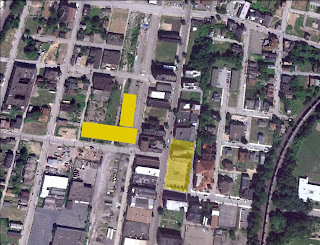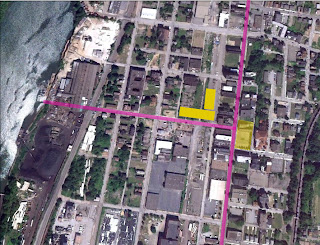Masters of Architecture
Friday, November 19, 2010
Wednesday, November 3, 2010
Thesis Abstract: Iteration III
Thesis Abstract
De-industrialized cities across the northeastern region of the US have long been deteriorating since the late 60s to mid 70s after the fall of industrialism. Due to company production relocation over seas and cheaper labor options companies close and displace thousands of jobs. The people in these towns and cities that once thrived on these companies now have to find alternative means of income and if not retired, must move from their homes and relocate. After cities become nearly abandoned valued land turns worthless and easy to acquire making it a nice alternative for low-income families and struggling artists. The only problem with more people buying this land is that there is no infrastructure with in the city. Stores, banks, hospitals, and schools can no longer support themselves there because of the lack of inhabitants. However if there were a way to add the infrastructure back by using land reclamation and adaptive reuse there may be a way for more businesses and civic needs to move into these towns and cities without have high operating costs. By using land waste, recycling buildings, and natural resources buildings could operate with little or no costs making it possible for funded buildings such as hospitals become a more attainable need.
Monday, November 1, 2010
Site Selection: Braddock, PA
Site 1: Located on Library Street and Braddock Ave
Building footprint = North + Central Annex
Site 1: Axis to water and main road
Site 2: Old Carnegie Steel Mill
Sunday, October 3, 2010
Attempt II: Thesis Abstract
Future: The New Architectural Identity Crisis
What would a building be without a link between form and function? A modernist would say form needs function like man needs air. The everyday inhabitant relies on form to lead them to a function. For instance a bank, the archaic built form of the loggia and oversized columns scream, to people as the architectural form of the gods relating back to Greek Temples causing a spasm in the cultural landscape to signify an importance to the building. This is all cause to rethink how architecture can influence the everyday inhabitant to inhibit pre-notions of what the form is speaking to them weather it be a theater, jail, learning institution or hospital etc without returning to the forms of the past. If there was a way to blend this idea into hybridizing the form to shroud function as an ambiguous space that could be perceived from different positions throughout the life cycle of the building, then the urban landscape could change in reference to the best possible use of any building at a particular time. Most of the time when architects set out to make a singular use of a building the occupiers usually set up their own system for how they want to use the building and the ideas of the architect soon gets blended into a mix-match of opposing ideas of pure practicality and aesthetic obscurity.
Tuesday, September 28, 2010
Attempt 1: Thesis Abstract
EPOCH: Your Home as a Dimension of Time
The home is place of nostalgia and we as humans have the most acute memories of them. How often does one refer to a memory that occurred in their childhood home? How can we track these memories within our homes? Our home eventually becomes an expression of us and that expression gets shown in the way we layout space and arrange objects that best suits our needs. Many times in design, we focus too much on making the house an edifice for consumerism and not enough about the development of social interactions within the home and family. What if the measurements of your child’s heights became a physical link between your home and memory? Or the placement of pictures on the wall, what if the holes you created to hang them became a textured time capsule along a hallway or living room. These things could be a way we track our home as a dimension in time without remembering the exact time events took place.
This project will look at what the home can do as a dimension of time, from the short term to the long term. What would make us as the inhabitant think about what we do in our homes regularly and how it shapes our mood and expression?
Subscribe to:
Comments (Atom)




